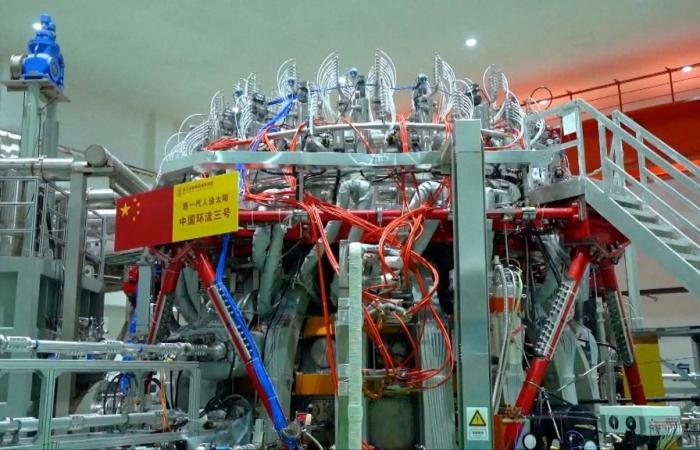Chinese scientists have reached a milestone on their path to nuclear fusion. The team announced an important result in the discovery and analysis of the structure of the magnetic field that forms inside the tokamak when high-energy plasma passes through it, all carried out thanks to the new large Chinese HL-3 tokamak.
The ability to create a map of the magnetic head that is created in the extreme operating conditions of the tokamak allows us to predict how it will behave and therefore be able to bring the machine to extreme conditions.
The discovery is the result of the first round of international joint experiments conducted on the HL-3 tokamak, a project open for global collaboration in late 2023.
Joint international efforts
As Chinese Media Group reports, the experiments involved 17 renowned research institutes and universities around the world, including the French Alternative Energy and Atomic Energy Commission and Kyoto University in Japan. This affirms China’s commitment to international cooperation to address the global energy crisis.
The HL-3 tokamak was designed and developed independently by China. It is also the largest and most advanced nuclear fusion device in the country.
It replicates the sun’s energy generation process through controlled nuclear fusion, a cutting-edge technology with immense potential to solve global energy and environmental challenges.
In August 2023, the HL-3 tokamak had achieved a first resultsuccessfully operating with a plasma current of 1 million amperes. This experiment consolidated China’s position at the forefront of magnetic confinement nuclear fusion research.
This latest discovery is crucial for controlling and confining the superheated plasma inside the tokamak.
Controlled nuclear fusion has long been considered the Holy Grail of energy research, promising a clean and virtually inexhaustible source of energy.
The HL-3 tokamak in section by Giuseppi
Clean energy solutions
China has actively promoted international cooperation in the nuclear energy sector, as demonstrated by recent partnerships with France, including joint research initiatives and contributions to the International Thermonuclear Experimental Reactor (ITER) project.
By opening the HL-3 tokamak to international collaboration and actively participating in global nuclear energy initiatives, China is demonstrating its commitment to promoting clean energy solutions and addressing the world’s growing energy demand.
However, China has its own organic path towards nuclear fusion, which should result in a demonstration reactor by 2030.
Global race to the artificial sun
Furthermore, the global race to harness the power of the ‘artificial sun’ continues to heat up.
Recently, South Korea’s Korea Superconducting Tokamak Advanced Research (KSTAR) reactor reached a major milestone, reaching temperatures seven times hotter than the sun’s core.
“To develop fusion energy, it is essential to secure the technology to sustain high-temperature, high-density plasmas, where fusion reactions occur more actively, for longer periods,” the Korea Institute said at the time of Fusion Energy (KFE).


Thanks to our Telegram channel you can stay updated on the publication of new Economic Scenarios articles.
⇒ Sign up right away ⇐








